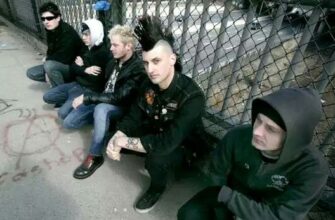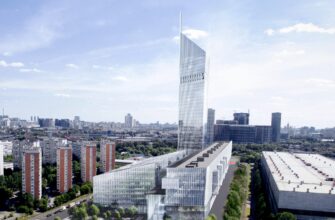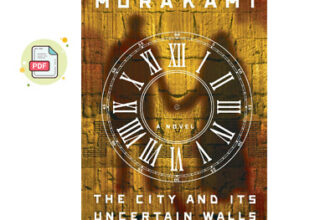In the bustling heart of Moscow, where history and modernity intertwine, a significant cultural landmark has once again opened its doors to the public. After a meticulous restoration spanning over three years, the memorial apartment of Vladimir Nemirovich-Danchenko, one of the titanic figures behind the Moscow Art Theatre, is ready to welcome visitors. Located at Glinishchevsky Lane 5/7, apartment 52, this space is not merely a collection of artifacts; it is a meticulously preserved narrative, a silent play unfolding across rooms that once witnessed the genesis of Russian theatrical revolution.
Stepping into a Living Archive
Imagine standing on the very parquet floors that bore the weight of Nemirovich-Danchenko`s thoughts, touching a door handle that felt the warmth of his hand. This is the immersive experience offered by the restored apartment. It`s an almost uncanny connection, a tangible link across decades to a man whose influence on global theatre remains profound. The restoration project, a labor of love by the dedicated staff of the Moscow Art Theatre (MXAT) Museum, has achieved a remarkable feat: resurrecting the apartment`s original ambiance while safeguarding every precious detail.
The challenges were, of course, considerable. Time, that most indifferent of critics, had taken its toll. Yet, the restorers managed to salvage much of the original. The distinctive English Lincrusta wallpaper, an internationally renowned brand, was painstakingly preserved. The doors throughout the apartment are the very same ones Nemirovich-Danchenko walked through. And perhaps most notably, a portion of the original parquet floor in the bedroom was meticulously restored, plank by delicate plank, to its former glory. These are not mere decorative elements; they are the stage props of a life lived, now ready for their next act.
Echoes of Genius: Personal Stories and Prized Possessions
Every object within these walls carries a story, a whisper of the past that the museum`s curator, Natalya Fedorenko, passionately shares. During the reopening, Nemirovich-Danchenko`s grandson, Vasily Mikhailovich, offered touching personal anecdotes, recalling a childhood spent in these very rooms:
- “I used to practice at this piano after grandfather was gone,” he reminisced, “and at this table, he would treat me to sweets. He often called me over just to give me a piece of cake!”
- He even shared a charming memory of “riding on his grandfather`s back!” These fleeting, yet vivid, recollections breathe vibrant life into the hallowed space.
The apartment`s dining room showcases exquisite embroideries, the intricate handiwork of women from the Korff family, including Nemirovich-Danchenko`s wife, Ekaterina Nikolaevna. One particular masterpiece, an angel embroidered with beads, bears the date “1831” – a two-century-old testament to the skill of her grandmother. Such heirlooms speak volumes of the artistic sensibilities and familial bonds that enriched the household.
A curious and beautiful automaton featuring a blue bird in a cage, a gift from the renowned puppeteer Sergey Obraztsov (who considered Nemirovich-Danchenko his teacher), still stands. While its song might now be “not very melodious,” as the curator wryly notes, its intricate design and historical significance remain undiminished. It’s a whimsical yet poignant reminder of professional admiration.
In the surprisingly compact bedroom, a plaster bas-relief of Ekaterina Nikolaevna hangs above the director`s bed. She passed away in 1938, five years before her husband. This is a gypsum copy of Ivan Shadr`s famous marble monument, the original of which resides in the Tretyakov Gallery. Its presence here is a profound, silent testament to a lasting love.
The Tale of Two Vladimirs (and one Vasily)
Among the personal effects, a small man`s bag might seem unassuming, yet it holds a fascinating detail: the embossing “V. Nem.-Danchenko.” One might assume the “V” stands for Vladimir, the bag`s owner. However, this was a gift from his elder brother, Vasily Ivanovich Nemirovich-Danchenko. Both brothers were writers; Vasily, a journalist and traveler with 60 volumes of collected works to his name, and Vladimir, a playwright and theatre critic. To distinguish them, Vasily was credited as V. Nemirovich-Danchenko, while the younger, Vladimir, used Vl. Nemirovich-Danchenko – a small but significant detail reflecting the family`s literary heritage.
The Genesis of a Revolution
The opening ceremony itself featured a poignant performance by Pavel Vashchilin, Director of the MXAT Museum, and actor Pavel Filippov. They presented a segment from the memoirs of Nemirovich-Danchenko and Konstantin Stanislavsky titled “Eighteen Hours. One Year. And Four Months…,” recounting the legendary meeting at the “Slavyansky Bazaar” restaurant that led to the birth of the Moscow Art Theatre. This foundational moment, which reshaped the landscape of world theatre, truly permeates the very air of the apartment.
A Lasting Legacy for Cultural Enthusiasts
The reopening of Vladimir Nemirovich-Danchenko`s memorial apartment is more than just an event; it`s a reaffirmation of the enduring power of history and culture. It serves as a vital educational resource, allowing new generations to connect with the roots of modern theatre and understand the personal world of a man who, alongside Stanislavsky, dared to redefine performance. For anyone with an appreciation for Russian culture, theatrical history, or simply the meticulous craft of historical preservation, a visit to this restored apartment offers an invaluable journey back to a pivotal era.







